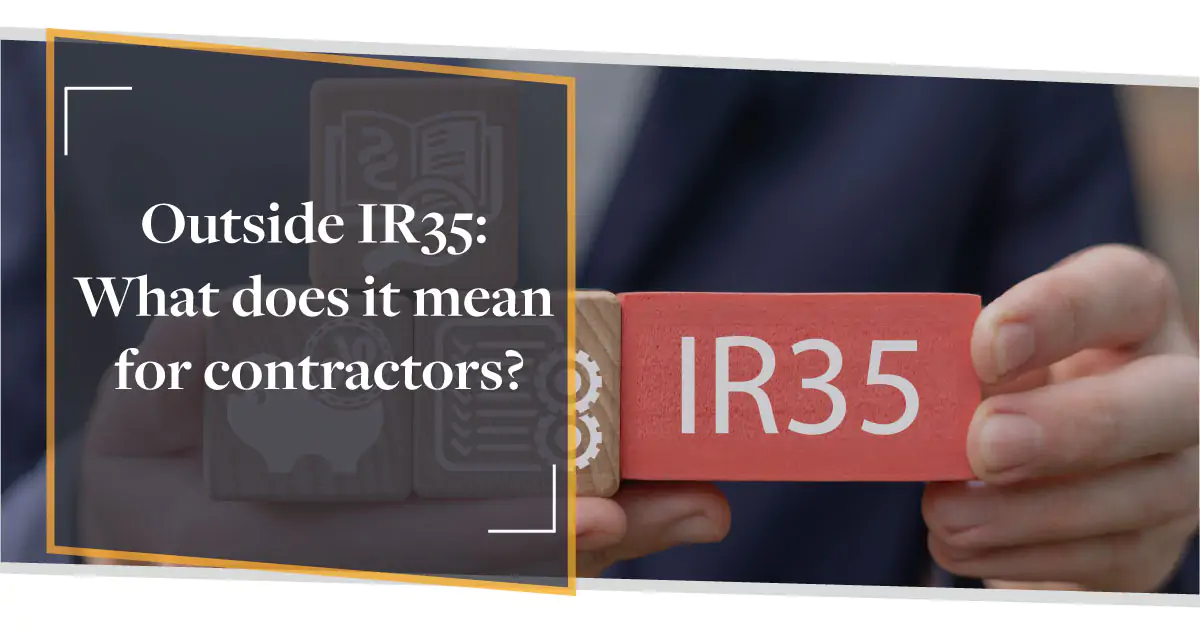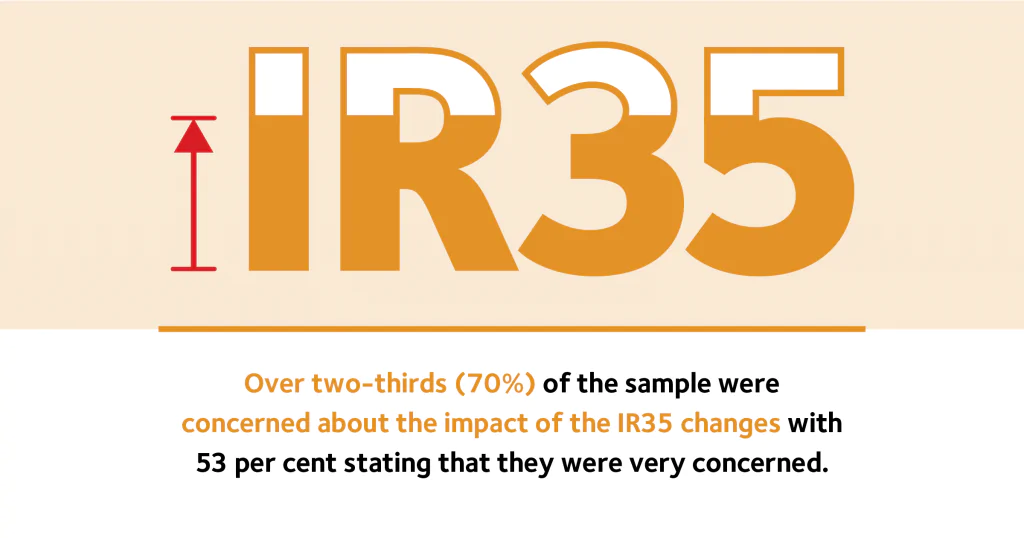
November 15th, 2021
It’s now 6 months since the off-payroll legislation, often referred to as IR35, comes into play in the private sector. As a self-employed professional, the chances are that you have heard about this. But even if you have, as IR35 is complicated legislation, you may be unsure of the exact details. We’ve got our friends over at Kingsbridge to give you a refresher on the new legislation and the difference between working inside and outside IR35.
What has changed with IR35?
The IR35 legislation was created to prevent ‘disguised employees’, contractors who, in the eyes of the Government are effectively working as employees of the client, but who are paying less tax than their employed counterparts. Your IR35 status is whether you are working as genuinely self-employed for an engagement, or if you are a disguised employee of the company.
Before the reforms came in on the 6th April 2021, it was your responsibility to assess your IR35 status (when working in the private sector, the public sector off-payroll reforms were back in April 2017). You also would have held the tax liability. The change in legislation means that it is now your end client’s responsibility to determine the IR35 status for your engagement. They must generate a Status Determination Statement (SDS), which would highlight whether you are working inside or outside IR35. It would then be up to your fee-payer to deduct any tax and national insurance payments due. This is usually your recruiter or end client, it would be whoever pays you. This process is the case for all engagements, with a few exceptions.
When would I still be responsible for IR35?
The IR35 legislation hasn’t changed for everyone. For instance, if your client is based overseas with no branch in the UK then IR35 remains your responsibility as the contractor. If you’d like to find out more, Kingsbridge has written a blog on how IR35 applies when working outside the UK.
The other exception to the IR35 legislation is if your client is classified as a small business. To count as a small business, they must satisfy at least two of the below points:
- An annual turnover of not more than £10.2 million;
- Not more than £5.1 million on their balance sheet;
- Not more than an average of 50 employees during the tax year.
If this is the case, then IR35 remains your responsibility to determine.
In our research with IPSE over two-thirds of respondents were concerned about the IR35 changes.

What is the difference between inside and outside IR35?
Outside IR35
If you are found outside IR35 in your SDS, this means that IR35 would not apply to you. You have been assessed as genuinely self-employed for the engagement, so you can carry on as you did before the legislative changes. You would remain responsible for paying your taxes and NICs owed.
Inside IR35
As you’d expect, being found inside IR35 means the opposite of outside IR35. The SDS states that you should be considered as a disguised employee for your engagement and should be taxed as such. You would then be taxed at source by your fee-payer. This would mean you would pay the same rates of tax as an employee would, and therefore take home less of your fees. To add a further sting to this, you wouldn’t get the same benefits as an employee of the company.
How will I be assessed for IR35?
Your end client should assess you and give you an SDS which will include your inside or outside IR35 status. HMRC has warned that organisations should take due care when assessing status, although some businesses have been making knee-jerk assessments in an attempt to mitigate risk. If you do not feel your client has taken proper care with your assessment, you do have the right to appeal.

How do I assess my own IR35 status?
There are a variety of avenues that a client may go down to assess your IR35 status. They could use the Government-owned CEST tool, which is a free tool provided by HMRC to assess your IR35 Status you can find that HERE.
Alternatively, the Kingsbridge IR35 Tool is a paid alternative and is comprehensive. In the event of a borderline result, your case will be passed to Kingsbridge’s in-house IR35 team for manual review. With the question set designed by their Head of Tax, Andy Vessey, the tool asks between 29 and 34 yes or no questions to get a comprehensive review of your contract and working practices. You can purchase for £50 plus VAT at the Kingsbridge Website
Useful Resources
- Base Rate Update: Why Homeowners Should Consider Remortgage | CMME Explains
- Settling Into IR35: The Future for Contractors | CMME
- Housing Bubble: Trouble on the Horizon? | CMME Investigates
Our friends over at Kingsbridge specialise in insurance for the contractor market. Providing essential cover including professional indemnity, public liability and employer’s liability, as well as IR35 assessments and insurance.



